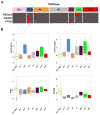Subtyping of triple-negative breast cancer: implications for therapy
- PMID: 25043972
- PMCID: PMC4270831
- DOI: 10.1002/cncr.28914
Subtyping of triple-negative breast cancer: implications for therapy
Abstract
Triple-negative breast cancer (TNBC) is a heterogeneous disease; gene expression analyses recently identified 6 distinct TNBC subtypes, each of which displays a unique biology. Exploring novel approaches for the treatment of these subtypes is critical, especially because the median survival for women with metastatic TNBC is less than 12 months, and virtually all women with metastatic TNBC ultimately will die of their disease despite systemic therapy. To date, not a single targeted therapy has been approved for the treatment of TNBC, and cytotoxic chemotherapy remains the standard treatment. In this review, the authors discuss recent developments in subtyping TNBC and the current and upcoming therapeutic strategies being explored in an attempt to target TNBC.
Keywords: clinical trials; subtyping triple-negative breast cancer; targeted therapies; triple-negative breast cancer.
© 2014 American Cancer Society.
Figures


References
-
- Dent R, Trudeau M, Pritchard KI, et al. Triple-negative breast cancer: clinical features and patterns of recurrence. Clin Cancer Res. 2007;13:4429–34. - PubMed
-
- Carey LA, Perou CM, Livasy CA, et al. Race, breast cancer subtypes, and survival in the Carolina Breast Cancer Study. JAMA. 2006;295:2492–502. - PubMed
-
- Perou CM, Sorlie T, Eisen MB, et al. Molecular portraits of human breast tumours. Nature. 2000;406:747–52. - PubMed
-
- Makretsov NA, Huntsman DG, Nielsen TO, et al. Hierarchical clustering analysis of tissue microarray immunostaining data identifies prognostically significant groups of breast carcinoma. Clin Cancer Res. 2004;10:6143–51. - PubMed
-
- Cheang MC, Voduc D, Bajdik C, et al. Basal-like breast cancer defined by five biomarkers has superior prognostic value than triple-negative phenotype. Clin Cancer Res. 2008;14:1368–76. - PubMed
Publication types
MeSH terms
Substances
Grants and funding
LinkOut - more resources
Full Text Sources
Other Literature Sources
Medical

